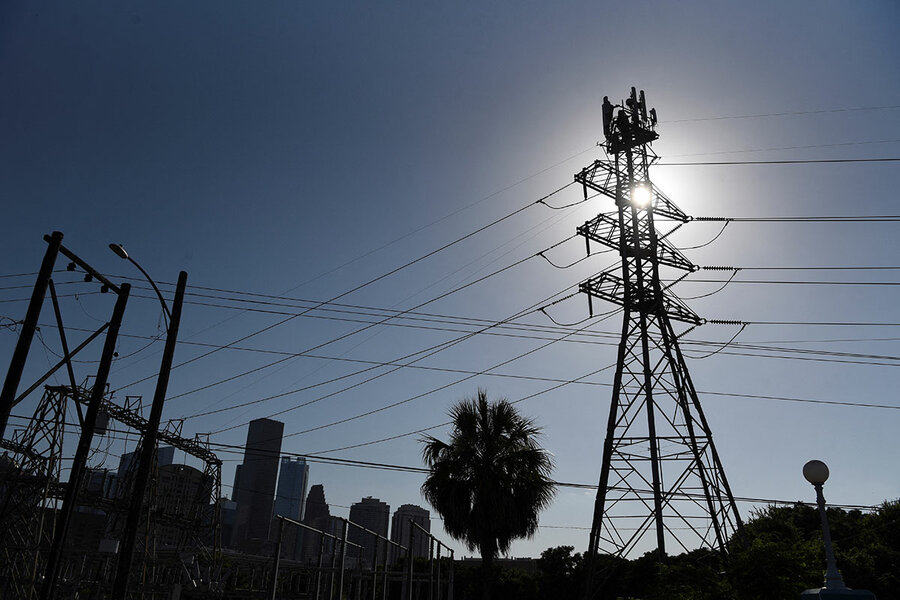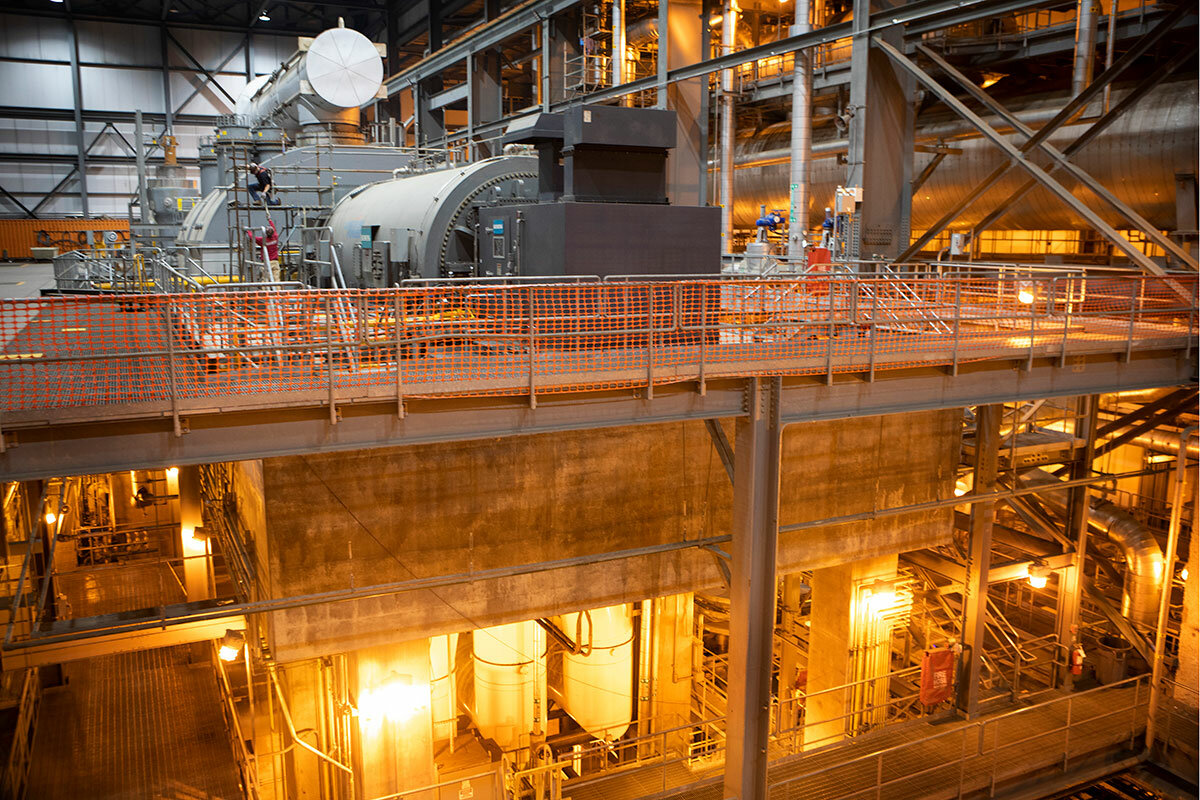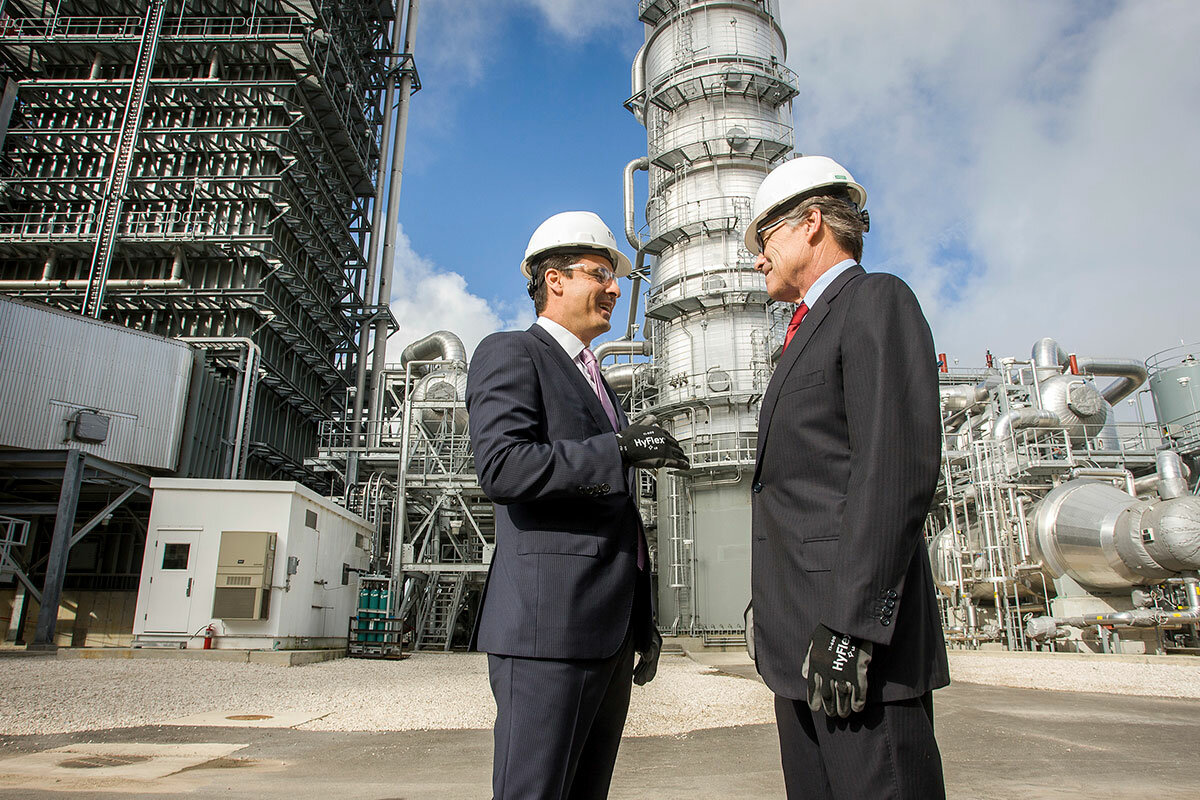Proposed power plant emission cuts: Can US keep the lights on?
Loading...
| Washington
During a cold spell on Christmas Eve, Ohio’s Buckeye Power Inc. came very close to rolling blackouts that would have left its 1 million mostly rural and lower-income customers without heat.
Now, as the air conditioning season heats up, CEO Patrick O’Loughlin recently told Congress he is facing another hurdle: a rule proposed in May by the Environmental Protection Agency that would require plants like his to cut carbon emissions substantially by the 2030s.
His company has already spent more than $1 billion over the past two decades to comply with previous environmental regulations and to implement “state of the art” emission reductions technology. But this rule, he testified June 6, involves unrealistic timelines for implementing technology not yet proven at commercial scale, and would force Buckeye to shut down its coal plants with “nearly no hope” of replacing that power by the EPA deadlines.
Why We Wrote This
A debate over how fast to transition to clean energy is gaining urgency, as a proposed EPA emissions rule stirs concerns about electric grid reliability.
“It’s going to force the retirements of several units like ours that right now provide the backbone of a reliable electric system,” said Mr. O’Loughlin. His company also generates electricity from natural gas, hydropower, biogas, and solar, but 80% comes from coal, he said.
The debate over how to move America – and the world – toward cleaner energy without leaving customers in the dark has become increasingly urgent in recent years. Now it’s coming to a head over this proposed rule.
If implemented, this EPA regulation would for the first time set legally enforceable deadlines for carbon emission reductions in the electricity sector, which is the No. 2 source of emissions in the United States. Advocates say the rule is crucial to America meeting its emissions reduction targets under the Paris Agreement, and that it is based on technologies that are cost-effective and have been “adequately demonstrated.”
“We simply can’t meet our climate goals without substantial reductions from this sector,” says Andres Restrepo, senior attorney with the Sierra Club’s Environmental Law Program. Noting that a significant transition toward more green energy has been occurring over the past five to 10 years, he adds, “This rule will help speed that along.”
Indeed, most proposed new projects are zero-emissions. But there’s a backlog in getting them approved and online – and their solar and wind power is intermittent rather than continuous like coal and gas. To be sure, fossil fuels also have reliability issues; recent emergencies like the 2021 Texas winter storm outages, which left 210 dead and more than 4.5 million without power, were due in part to natural gas fuel supply issues. Still, industry stakeholders and their GOP allies say that an overly hasty green transition could strain a grid already beset by rising demand, extreme weather events, and coal plants retiring faster than renewables can reliably provide a similar amount of electricity.
The comment period for this EPA rule, which ends Aug. 8, has therefore become an outlet for a broad range of concerns about electricity affordability and grid reliability. As for the rule specifically, critics say the EPA’s modeling has overestimated the potential for emissions reduction and based its requirements on technology whose commercial viability has yet to be proven in the power sector.
“There are fundamental questions about how economically feasible this technology could be at scale,” says Devin Hartman, director of energy and environmental policy at the R Street Institute, a think tank.
How much difference would the rule make?
Scientists have estimated that in order to cap global warming at 1.5 degrees Celsius (2.7 degrees Fahrenheit) above preindustrial levels – the target of the Paris Agreement, an international treaty on climate change that the U.S. rejoined under the Biden administration – the world will need to cut greenhouse gas emissions by 43% compared with 2019 levels by the end of the decade. Many climate scientists believe the world will miss that target.
The EPA has regulated greenhouse gases in cars as well as oil and gas production, but has yet to do so in the electric power sector. The Obama administration had tried to cut emissions in the sector with its 2015 Clean Power Plan, which was later withdrawn by the Trump administration. Last year, the Supreme Court struck down a key principle of the plan in West Virginia v. EPA.
Still, the sector has substantially decreased its emissions over the past decade, down to 1980 levels. Under this new rule, the EPA projects annual reductions of 0.6% to 5.7% compared with current levels during the period 2028-2042, with a cumulative reduction of 617 million metric tons.
To achieve that, the EPA is using its authority under the Clean Air Act to propose new limits on how much carbon can be emitted by existing and new coal- and gas-fired power plants. It would apply a sliding scale of percentages and timelines depending on the type, age, and output of plants. To meet the targets, most would have to utilize carbon capture and storage technology or begin co-firing with cleaner fuels.
Carbon capture and storage has become more affordable, due to $12 billion worth of incentives in the Inflation Reduction Act passed by Congress last year. And the technology has been used in other types of plants, including oil refineries, cement plants, and ethanol plants. Carbon capture has been used to cut carbon emissions by as much as 90% in a number of small-scale projects, and was first deployed at scale in the U.S. on a coal-fired power plant in 2017. That plant, Petra Nova in Texas, has since been idled. The EPA says that a Canadian coal-fired power plant, Boundary Dam, also demonstrates the scalability of such technology, which the plant is using on one of its units with demonstrated capture rates of 90%.
In an email to the Monitor, EPA said the agency “may determine a control to be ‘adequately demonstrated’ even if it is new and not yet in widespread commercial use” – something it did with sulfur regulation in the 1970s. The agency said it can also “reasonably project” how quickly technologies will improve, and set timelines accordingly.
After the comment period closes, the EPA will finalize the rule, incorporating feedback as it sees fit. Once implemented, it will likely be challenged in court. But the EPA has sought to base the rule on solid legal footing by only regulating emissions, rather than by directly requiring certain types or proportions of electricity generation.
“This is its latest try at trying to stay within the mercurial boundaries of the Supreme Court,” says John Larsen, who leads U.S. energy system and climate policy research at the Rhodium Group, an independent research provider.
The broader issue: a stressed grid
The new rule comes against a backdrop of increasing concern about grid reliability as coal plants retire, extreme weather events stress the system, and overall demand rises, due in part to a move toward electric vehicles and new power-intensive sectors like cryptocurrency and artificial intelligence.
“I would probably put [the rule] in the top three of challenges to grid reliability,” says John Chiles of GDS Associates in Marietta, Georgia, a consulting and engineering firm. Mr. Chiles is an expert on transmission services who has worked in different aspects of the industry for decades.
While even some supporters say there are significant operational challenges in implementing the rule, which could affect reliability if not managed well, some say it’s not as difficult as the industry is making it out to be. The rule will not affect the plants used at crunch times – so-called peaker plants. In addition, if a plant announces it plans to retire and a grid operator determines that will undermine reliability, the operator can require the plant to stay online for a time – preventing a sudden drop-off in electricity supply.
Some of the key challenges with reliability are unrelated to this rule, including the backlog of new green energy projects trying to win the various approvals needed to get up and running. The patchwork of federal regulations, state policies, and NIMBYism can draw out the process for years.
Part of the challenge is that no one government agency was designed to manage a major energy transition like this, leaving jurisdictional gaps and overlaps that Congress has not tried to clarify since a failed clean energy bill in 2009.
The responsibility and requirements for pollution, grid operations, reliability rules, and incentives for clean energy technologies are spread across federal and state agencies.
“There’s no central coordination,” says the Rhodium Group’s Mr. Larsen, who formerly worked for the Department of Energy.
Jay Duffy, litigation director for the advocacy group Clean Air Task Force, calls for a “whole of government” approach that draws on the expertise of the various agencies to achieve the clean energy transition.
But industry also needs a nudge, he testified on June 6.
“History shows that pollution control options can be developed, available, and cost-reasonable, yet sit on the shelves gathering dust until some regulation or incentive pushes or pulls an industry to reduce their pollution.”
Editor’s note: A paragraph in this article has been updated to reflect additional information, provided by the EPA after publication, on current deployment of carbon capture technology.








